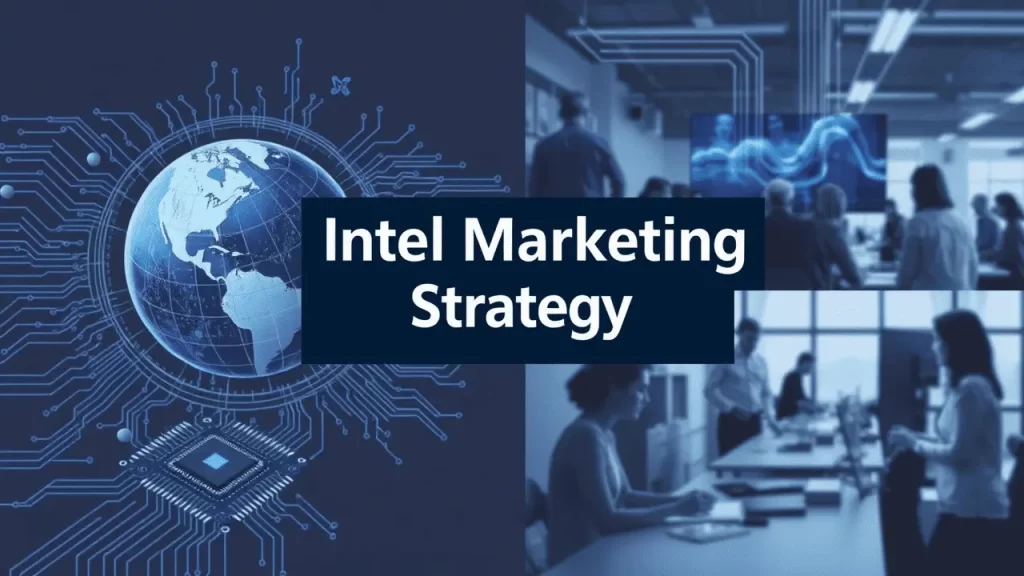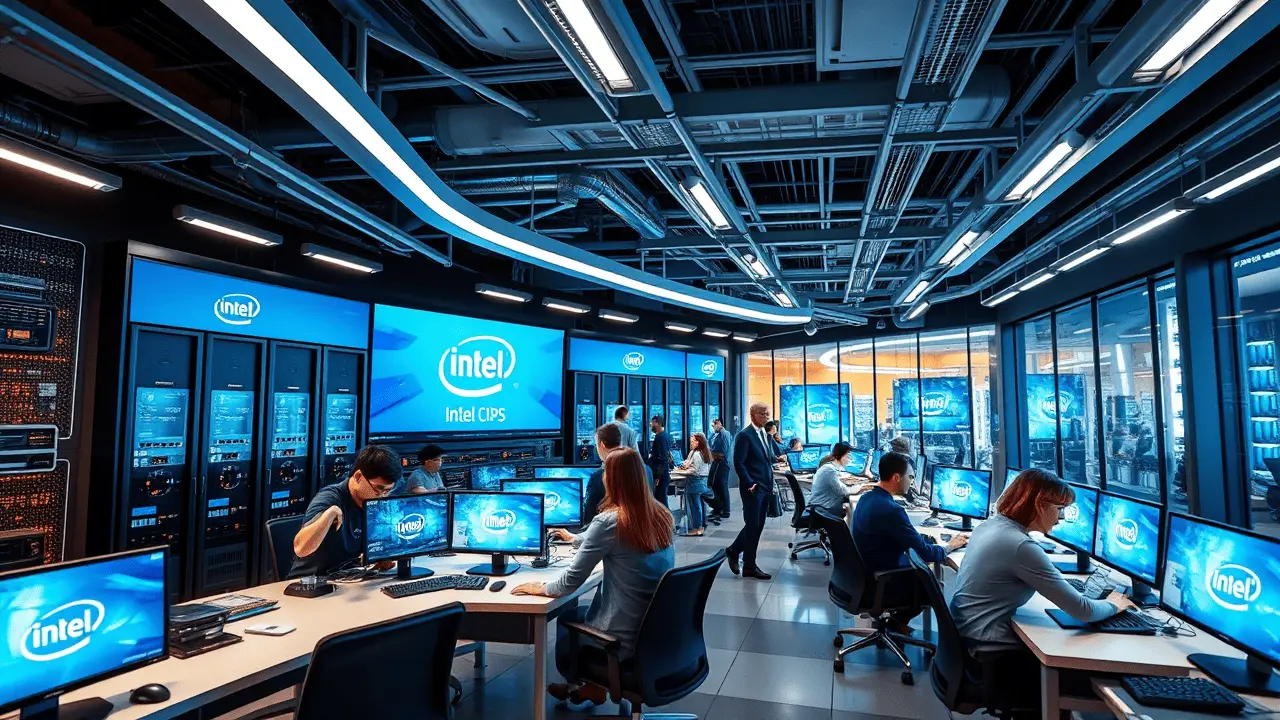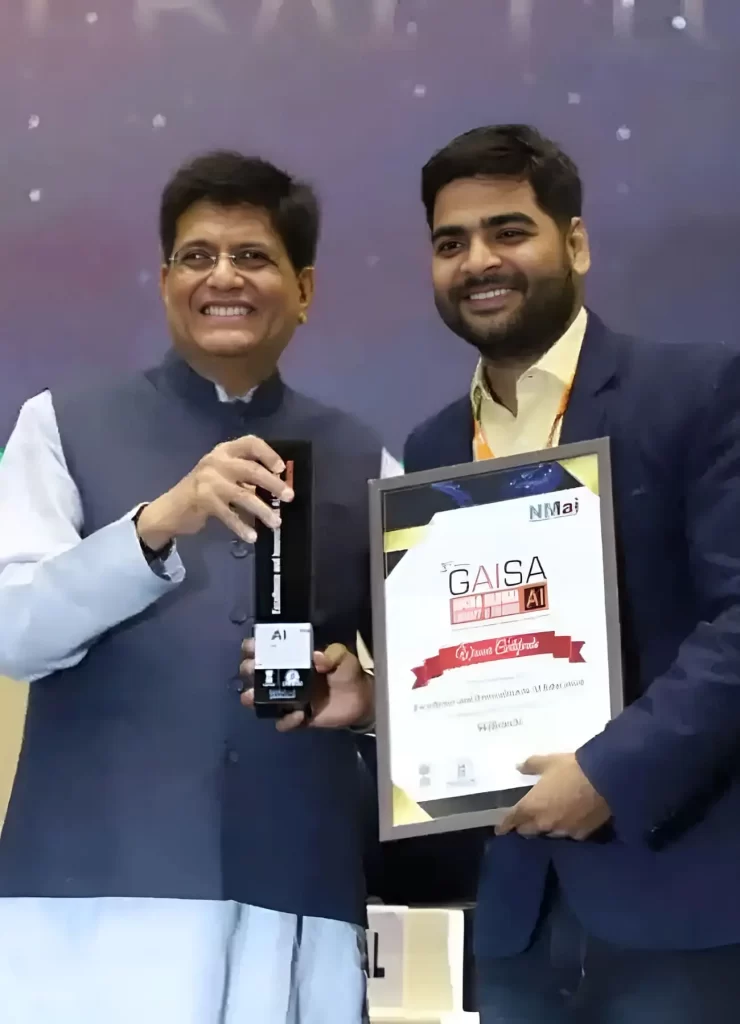
Introduction to Intel Marketing Strategy: A Blueprint for Success
In this blog, we will take a close look at Intel’s marketing strategy. We will explore Intel B2B marketing strategy, how they market their chips, and why Intel is such a strong company in the tech world. Let’s dive in and learn together!
Intel Corporation, as a known brand in the world’s microchip processing industry, has always been at the top by making the most reliable chips as well as cutting-edge technologies. Intel’s marketing strategy was the key factor in establishing the company as a leader in the technology field. Also, the company’s marketing team should be praised. Led by their brand positioning, being the leaders in trends, and thus increasing the trust of their customers, Intel’s marketing department made them virtually unbeatable in the game of marketing. The three mainstays of the Intel marketing strategy are brand positioning, innovation, and customer loyalty, and they have come up with the marketing blueprint that many other companies struggle to copy.
Marketing strategy of Intel is one of the points that make Intel victorious. Thanks to the launch of Intel’s renowned “Intel Inside” campaign back in 1991, the technology corporation set in motion a whole new era of personal computing. The goal of the campaign was to inform the end-users of the Intel microprocessors’ presence in computers, and in doing so, the company was able to evoke a sense of trustworthiness and loyalty. The company was able to turn what was once a mere inside part into a symbol of quality and performance by emphasising the need to have Intel inside.
Intel marketing strategy stresses the importance of technological innovation among its other aspects. Intel spends a lot of money on research and development (R&D) to keep its products at the cutting edge of technological advances. With this strategy, Intel was able to develop products that were advanced, such as the Intel Core, which has been widely used for both personal and professional uses.
Tired of not getting a JOB?
Diploma Course in Digital Marketing
With 100% Job Guarantee
Learn effective marketing strategies & maximize your income.
We know that the utilisation of Intel technology will be significantly enhanced through collaborative efforts with the best technology companies. Thanks to the mutually beneficial arrangements with Microsoft, Dell, and other recognised brands, Intel has been able to reach out and stay ahead in their competitive position. These joint ventures are not just about reinforcing Intel’s market; they also help to increase its brand name among consumers and service providers.
Furthermore, Intel’s contribution to sustainability and corporate social responsibility (CSR) is an additional value of its brand. In an effort to make its brand greener and utilise renewable energy, Intel is in line with global eco trends, which makes its name more popular.
Exploring Intel B2B Marketing Strategy: How It Dominates the Enterprise Market
Intel B2B marketing strategy is a critical component of its overall success, enabling the company to maintain a strong presence in the enterprise market. Intel focuses on delivering tailored solutions that meet the unique needs of businesses across various industries.
1. Customized Solutions for Enterprises
Intel is cognisant of the fact that companies need personalised solutions to improve their business processes. In this way, Intel assists businesses in achieving higher levels of productivity and results via tailored processors and cloud services. To exemplify, Intel’s Xeon Processors are some of the favorite in data centres and the motherboard servers in different companies because of their reliability and amazing processing power.
2. Partnerships with Industry Leaders
To bolster their product line in the B2B sector, Intel collaborates either on one or all of the top technology companies, Microsoft, Google, and Amazon. That’s how they gain access to various markets and integrate their products smoothly into enterprise ecosystems, which brings to businesses an offering of reliable and scalable solutions.
By way of illustration, through the cooperation between Intel and Amazon Web Services (AWS), a new family of cloud solutions with high performance mortar has been made available, as a result of which, businesses now find it possible to scale their operations more effectively. Intel B2B marketing strategy is, indeed, reinforced by such alliances, as through them, Intel positions itself as a supplier that is capable of being the perfect solution partner for the new technology development needs of the potential clients.
3. Targeted Marketing Campaigns
Intel B2B marketing strategy is the marketing of its products to enterprise clients, which is done by targeted campaigns that show the benefits of Intel’s products for enterprise clients. These campaigns push the performance, security, and scalability of Intel’s solutions as key selling points, making them an attractive choice for businesses.
Take Intel’s “Data-Centric Future” campaign as the most exemplary case in point, in which it addresses the need for companies to make decisions based on data. Through the promotion of its solutions, which focus on the importance of data in a business, Intel not only reiterates its involvement in business growth and innovation but also its track record in the facilitation of the same.
4. Thought Leadership and Educational Content
Intel uses its know-how to become an industry leader in the technology field. Webinars, whitepapers, and case studies are the instruments of Intel to convey knowledge to B2B about the technologies that are new in the world and the industry trends. This strategy not only forges trust but also makes Intel a viable choice for companies that are looking for cutting-edge solutions.

Analyzing Intel Chips Marketing Strategy: Driving Innovation and Demand
Intel chips marketing strategy was the strength that propelled the semiconductor company to a leading position. Intel persists in its strategy by using innovation, quality, and brand trust in order to stand out maintained in a market that is constantly changing with the same speed as new technology is being developed.
1. Product Differentiation Through Innovation
Intel keeps investing in research and development to create fast and super-power microprocessors that meet all market segments’ criteria. The launch of the Intel Core, Pentium, and Celeron series, however, has enabled Intel not only to diversify its product portfolio but also to cover a wide range of customer demands, ranging from entry-level consumer computing to cutting-edge gaming and professional applications.
One of the best pieces of evidence of this innovation is the inception of the Intel Core i9 processor, which is specially created for gamers and specific platforms. Due to its high speed and good performance, the i9 series has become the favourite for the users who are looking for top-end computing solutions.
2. Targeted Marketing for Different Segments
Intel chips marketing strategy consists of aiming towards various market segments with specific means of communication. Consequently, a promotion that insists on the usefulness of Intel’s microprocessors for business apps and, at the same time, claims the fact that perfectionism in gaming represents the brand would imply that the company is striving for multichannel communication and coordination.
Intel has been improving its advertising strategy by partnering with esports organizations and gaming influencers, which led to the branching out of them to promote their high-performance processors to the gaming community. The targeted approach raises brand visibility as well as giving Intel a good image as a reliable name in the industry of games.
3. Emphasis on Quality and Reliability
Intel’s chips are famous for their durability and reliability, and these values are the major marketing point proclaimed by the company. Stressing the longevity and speed of hardware, Intel is genuinely winning over customers and getting ahold of their favour among companies.
Intel’s consistent focus on delivering reliable products has helped it maintain a competitive advantage, even as competitors such as AMD introduce new offerings.
4. Leveraging Brand Loyalty and Recognition
Intel’s success story with the “Intel Inside” campaign hinges on their marketing strategy that is aimed at popularising their brand through consumer familiarity. Intel has built a powerful brand by linking the chips with quality and performance that is cherished by both consumer and business customers.

Key Elements of the Marketing Strategy of Intel: What Sets Them Apart
The marketing strategy of Intel is based on a few key factors that give the company an edge over its rivals. These factors allow Intel to keep its position as a world leader in the semiconductor industry.
1. Strong Brand Positioning
Intel is well known for its innovation, reliability, and quality. This company has become more of a brand within the tech sector due to its persistence in branding and proper marketing strategies. The “Intel Inside” campaign hilltops this successful tactic.
2. Focus on R&D and Innovation
Intel is strictly dedicated to developing new and advanced technologies, which are the key factors of the company’s success. With billions of dollars spent on R&D every year, Intel is at the forefront of the market for the development and provision of state-of-the-art technological solutions that not only meet the user’s needs but maintain their functionality in a business setting.
3. Customer-Centric Approach
Customer satisfaction is very important to Intel. It is the main focus of Intel to know and solve the problems of customers. Be the priority in providing gaming processors high on performance or be the solution in such a way that you provide the scalability to enterprises in terms of processors are the aspects of the customer-centric approach followed by Intel in its marketing strategies.
4. Strategic Partnerships and Collaborations
With the assistance of the top-notch firms in the industry, Intel pursued a wider presence in the market and reinforced its array of products. By integrating features of companies like Microsoft, Amazon, and Google into their products, Intel is able to make futuristic solutions that not only push technology but also bring competitiveness.
5. Thought Leadership and Educational Marketing
Intel uses its proficiency to inform the public through thought leadership content. In addition to addressing the new technology venues and industrial trends, Intel strengthens its status as a key tech leader.

Conclusion: Lessons to Learn from Intel Marketing Strategy
Intel’s marketing strategy has a lot of important things to teach for companies that want to develop strong brands and be competitive. Whether it’s the company’s dedication to innovation and quality, its commitment to a customer-orientated approach, or its collaboration with other firms to solve industry-wide challenges, Intel is a testament to the fact that proper and comprehensive marketing can be the key to lifting the company to the top in the long run.
By understanding and applying the key elements of Intel marketing strategy, businesses can position themselves for growth and innovation in their respective industries.












